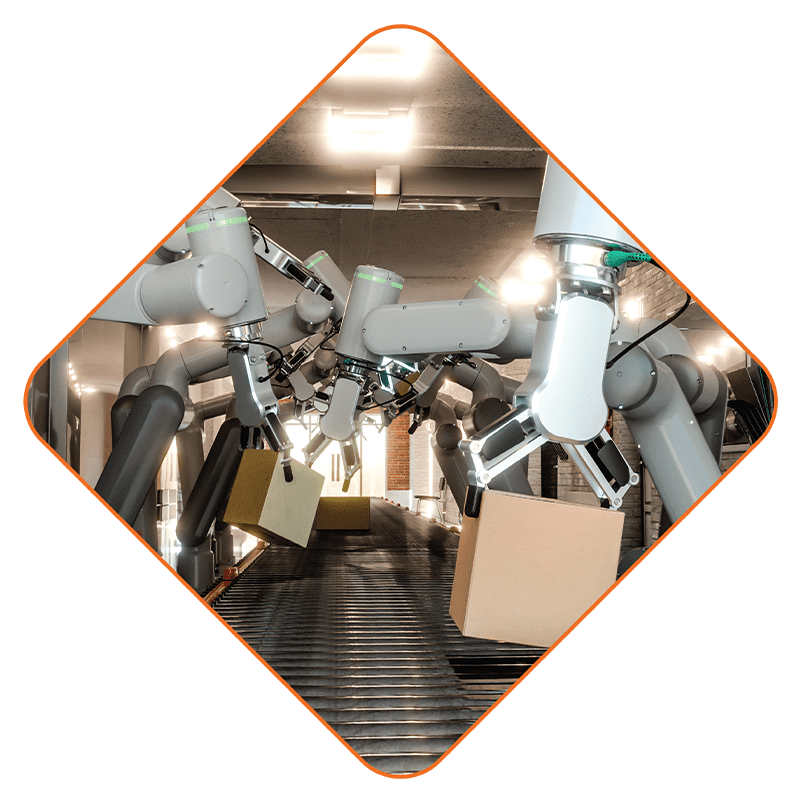Collaborative Robotics
Part of Testbed Utilised:
Robotics testbed
Key Stakeholders:
Bristol Robotics Lab, Toshiba, University of the West of England, Bristol University
Key Goal:
Develop the warehouse of the future using swarm AI driven robotics

The Challenge
In warehouse environments, robots have to deal with the challenge of moving objects that are of various shapes and sizes without colliding and misjudging the objects. In the absence of swarm robotic technology, the robots use centralised methods to collaborate and co-ordinate their movements, which requires centralised processing and communication. This leads to an expensive infrastructure.
The Collaborative Warehouse-Storage-Solution use case, uses swarm robotic technology that exploits multiple robots collectively moving pallets containing objects. Using co-ordinated robot methods improves performance which can be measured in terms of the time taken to store and retrieve the pallets, and the resources (including battery energy) used. This use case shows how the overall cost of the infrastructure required for deploying robotic warehouse systems can be reduced.
There are a number of testbeds available, such as Robotarium and IRIS, that support collaborative robotics experimentation. These existing testbeds are largely used for general swarm algorithm research and evaluation, rather than being use case specific.
The Approach
Swarm robots coordinate their activities in an autonomous self-configuring manner. In this way there is no reliance on infrastructure being deployed. The swarm robots use various sensors, including distance and camera sensors and radios to obtain information about the environment. Robots process this information and it forms the basis of their actions.
The robots also contain radios to communicate with each other. Digital twins are used to evaluate and optimise or evolve the algorithms. These are then created and deployed to the digital twin simulator environment and robots.
The algorithms are set goals and tasks for the robots to achieve. Performance is measured by the way in which they collectively tackle these challenges. For example, looking at experiments where objects or pallets are moved by up to 20 swarm robots and the obstacles that might hinder their movements. Ground truth data is then collected to validate and evaluate the performance of the robots in fulfilling their tasks.
The Benefits
- Algorithms can be optimised and evaluated for performing particular tasks and for particular environments, without prior knowledge of the environment or infrastructure available.
- Digital twin environments permit accurate representation and comparison with the real arena environment for validating and evolving or optimising the algorithms.
- Lower costs of automated warehouse infrastructure deployment.
- Ease of scalability to expand capabilities as the warehouse operation grows.
- Zero prior configuration and infrastructure required.


